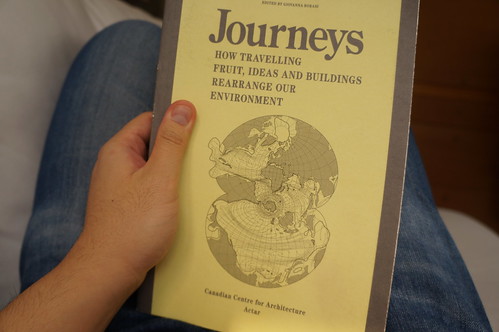When I traveled home for a visit during the Christmas holiday of 2010-11, I took a free afternoon to visit the Canadian Centre for Architecture‘s temporary exhibit at the time, Journeys: How travelling fruit, ideas and buildings rearrange our environment. Journeys was about the idea of travelling ideas and the people and things that circulate around the world to create the hybridized spaces we live in.
The curators organized the exhibition around examples of places that demonstrated how natural things (cucumbers, coconuts) and ideas (Old South residences in Liberia, Italian granite expertise in Vermont) traveled to enrich their environments. For instance, Japanese settlers in the post-war era of the 1950s went to Bolivia to experiment with agriculture, opening sections of jungle, starting with rice, but eventually going with other crops.
Hong Kong, the place I call home for the past three years, is the epitome of migrating cultures, ideas and fruits. Established as a British colony, the now Special Administrative Region has always been a place of transit for people and knowledge (and money), where things never quite stay the same (see 2046 and Culture and the Politics of Disappearance).
Hong Kong is one of those places where the land was established fairly recently (it ain’t Rome), and at the same time sees different cultures, ideas attach themselves, merge, mix and remix. People often stay in Hong Kong on transit, leave and come back.
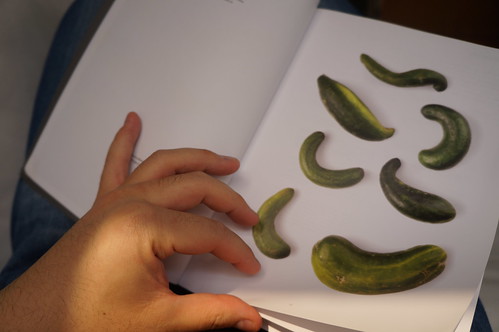
What’s a “cucumber”? The European Economic Community has a definition for that.

Some Newfoundlanders move their homes to follow the source of their livelihood: fish.
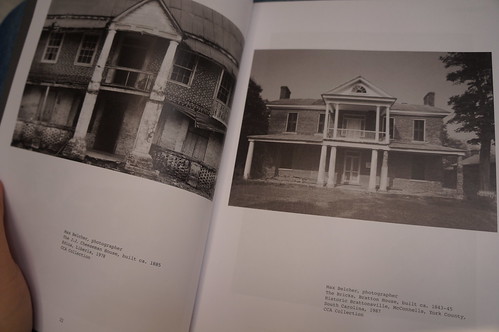
Freed slaves “colonized” Liberia, reestablishing the power structures they experienced in America.
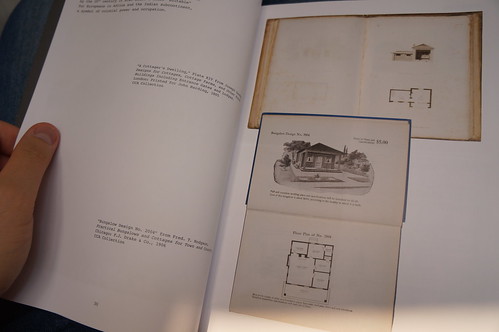
The bungalow: symbol of colonial power and occupation.
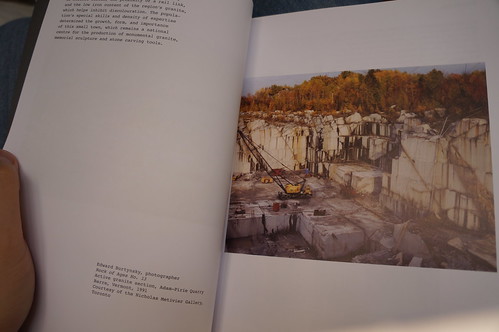
Skilled labour from Piedmont and Lombardy transformed the granite industry in New England during the late 19th century.
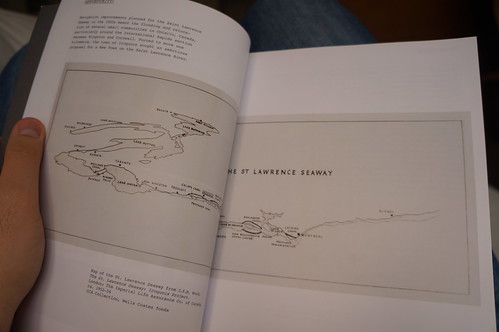
Building the Saint Lawrence Seaway in the 1950s was an opportunity for planning the new town of Iroquois.
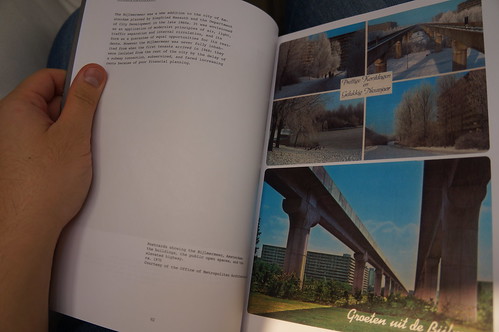
The Bijlmermeer was a modernist city built in the 1960s, only fully settled in the 1970s by Surinamese immigrants.
My family has been out of China since my grandparents. Probably because my parents were born in different places, we didn’t fully embrace the proxy culture (Madagascar and Vietnam) as much as some of my cousin’s families did, and took Hong Kong as a default ancestral home. And like a lot of Hongkongers (which we’re not even), our actual ancestral home is somewhere else. Right now, I would say that after three years, Montreal and everything that goes with it is my home. There’s nonetheless something familiar about Hong Kong, in such ways that I wouldn’t feel as comfortable living in Beijing or Taipei, say.

